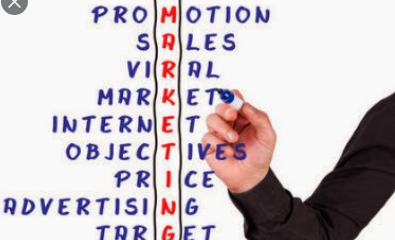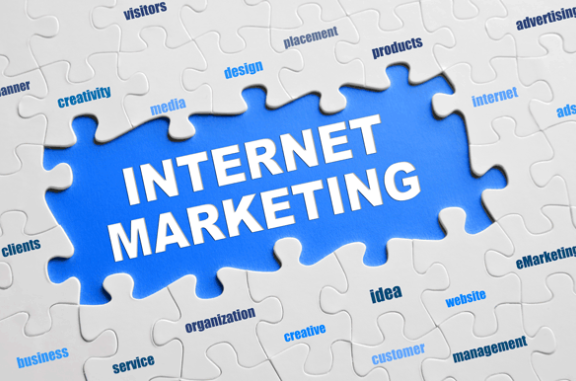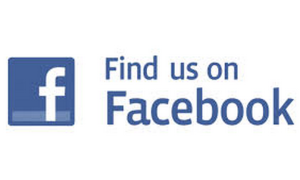Category: SOCIAL MEDIA
What Makes Whole Foods Social Media Strategy a Difference Maker?
When choosing to learn from others, it is always helpful to choose first-movers like Whole Foods social media. They have been successfully executing a social media campaign for over 5 years, and their strategy has played a significant role in their growth.

If you’re not familiar with Whole Foods, it’s a leading natural and organic food store with nearly 300 locations in North America and the United Kingdom.
Their social media strategy is built around their company web site and 6 additional social platforms, including Twitter, Facebook, Flickr, their blog, and recent additions of Foursquare and Pinterest.
Their Twitter accounts are used primarily as a customer service tool … responding to individual customer questions and requests. They have several niches Twitter accounts for such special topics as wine and cheese, as well as accounts for most of the local stores.
Their Facebook and blog platforms allow them to promote more of their product information, health, recipes, and cooking tip content … engaging as well as educating their customers.
They also use both platforms to build their brand image. An example of this is an upcoming special film series “Do Something Reel Film Festival”. This extensive 6-month series, to start April 22, is a celebration of people who understand that small ideas can create big change.
The festival’s objectives are to connect the brand with food and environmental issues and to inspire people to make a difference.
There are six key reasons Whole Foods social media strategy is a successful difference-maker for their marketing campaign:
Whole Foods, while a large, international company, puts a priority on the local component of its strategy. There is a community manager assigned at every store, who manages their customer engagement through multiple platform accounts. They focus on being where the customers are.
They maintain very loose control from corporate headquarters. They assist and collaborate, but the local stores maintain lots of freedom of initiative.
All of the efforts are continually focused on improving the relevancy of customer engagement. They are not afraid to experiment to see what works and what doesn’t.
Each social media platform has its primary objectives – with some flexibility and adaptability maintained.
The strategy sets a goal of linking and loose integration of all the platform efforts.
They believe in letting customer engagement and conversation occur as naturally as possible. They listen, observe, and apply new ideas from what they learn.
There are many ideas that you can take away from Whole Foods Social Media Strategy.
Which ones can you apply to your business?
Using Facebook to Crowdsource a New Beer
Sam Adams, the American beer company, is using Facebook applications to engage fans for inputs which will permit them to create a custom beer.

Another example of how businesses are using social media to engage and solicit feedback from customers and extend this engagement to crowdsourcing product and services.
Titled ‘The Crowd Craft Project’, Sam Adams’ consumers will be able to give feedback on the company’s latest offering, commenting on a number of categories used to describe the drink such as color and body.
The most popular categories as selected by Facebook fans will then be used by the company’s brewers to develop the new drink which will be brewed in February.

The beer will début in March during what Sam Adams describe as “a well-known interactive annual festival in Austin, TX” – which most likely means SXSW. It will then go on to be served in a number of Austin bars and at the company’s brewery, before experiencing a wider release.
Essentially, the crowdsourcing engagement campaign amounts to free market research for the company, bypassing an agency and going straight to the consumer, and then giving them exactly what they say they want.
The drawback? In my opinion, there are two: first, it is difficult to collect inputs on a tasting product from simply on-line feedback, and second, there is no guarantee of the number of responses. With over 100,000 likes and the perennial popularity of beer itself, it’s likely enough that they’ll get a good response.

Hats off to Sam Adams for this type of customer engagement and product development experimentation! As one of their good customers, I can only hope a great product is a result.
How KLM Airlines Marketing Uses Social Media for Winning Campaigns
When choosing to learn from others’ social media marketing campaign strategies, it is always helpful to choose the best of the best. Those that are most innovative and very eager to try lots of new and different ideas. And not afraid of a failure or two. KLM Airlines marketing certainly deserves to be in this camp. Real social media marketing innovators. They frequently come up when marketers are discussing the best in social media marketing.
They have been successfully executing their social media marketing plan for over 4 years, and their strategies have played a key role in their marketing and customer engagement.
If you’re not familiar with KLM Royal Dutch Airlines, known by its initials KLM, is the flag carrier airline of the Netherlands. With headquarters is in Amsterdam, KLM operates scheduled passenger and cargo services to more than 90 destinations worldwide. It is the oldest airline in the world, still operating under its original name (Founded in 1919).
Their social media strategy is built around their company web site and 6 additional social platforms, including Twitter, Facebook, Google+, their blog, and recent additions of Foursquare and Pinterest.
Over the past four years, they have launched a number of social campaigns – some big, some small. They had a few failures along with great successes. Let’s examine some of their more noteworthy campaigns.
KLM Surprise
Remember how great it felt the first time you got a social response from a brand you love or business you deal with? All the goodwill generated by their speedy response? Well, KLM decided to run an experiment with its social community, for people who check-in via foursquare for flights or tweet about waiting to board the next KLM service, and they called it “KLM Surprise”. The aim of this campaign was to bring random surprises and happiness to the boring wait for flights.
Here is a video KLM made on this campaign:
KLM’s social campaign involved a team of people identifying KLM passengers currently waiting for flights (and hanging out on Twitter), before researching each person’s social profile to find out a little more about their personality and destination. Given that information, they matched passengers to a surprise gift that they’d give before each person boarded their flight. The aim was to add a little surprise to create happy customers who have plenty of time on their hands to tweet their network about a great KLM experience at the airport. That’s a very cool social experiment.
Meet and Seat
The meet and seat campaign objective was to offer passengers a choice of seat-mates by accessing each other’s Facebook and LinkedIn profiles. If passengers so chose to participate, their Facebook and LinkedIn profiles were linked to their check-in information which was shared with other passengers also choosing the service.
Of course, passengers don’t have to link up their profiles if they’re not interested but what if they play along and end up with someone who just wants to make a sales pitch? The answer is you could have ended up with a worse result by taking your random seating chance. What would be your choice?
Listening to customers
In another act of social media genius, KLM used Twitter to add a flight to its roster.
It all started when a Dutch filmmaker tweeted his disappointment about the lack of a direct flight from Amsterdam to Miami. Specifically, he was looking for a hangover-reducing direct flight to/from the Ultra Music Festival taking place in Miami on March 21st, 2011. A KLM rep rapidly responded with a wager – if the filmmaker could book an entire flight (351 seats) before December 6th, KLM would add the non-stop flight to its schedule.
Beyond all expectations, the resulting campaign Fly2Miami sold out the entire flight within 5 hours.
“We can rightly call it a first – the first time KLM deployed an aircraft following a request on Twitter,” replied Martijn van der Zee, VP of e-commerce at KLM. “Social media are becoming more and more important to KLM to offer information and service to our customers.
I’ll say it again. Talk about the GREAT ability to listening to customers, yes?
KLM Must See Maps
KLM Royal Dutch Airlines is ramping up its digital engagement with KLM Must See Map, a friend-sourced destination map that combines social and print.
Users create a map for a destination and ask friends for travel tips via Facebook, Twitter, and email. Facebook check-ins show which friends have already visited the destination, their tips on favorite places, and their locations. You can add your own tips, then order a copy of the map in print and receive it for free.
Up and running in 24 countries, the application comes from the Dutch agency Code d’Azur.
In this case, KLM’s goal is to enlarge its global e-mail database. “The KLM Must See Map campaign perfectly fits KLM’s ‘little act of kindness’ social media strategy,” says Viktor van der Wijk, Director Digital Marketing, KLM. Participants get a free personalized city map delivered at home and we receive their e-mail addresses in return. That makes a great win-win and that’s what KLM was looking for.
Tile and inspire
The KLM Tile and Inspire campaign sought to engage customers by soliciting tile image designs from them. The winning designs would be put on one KLM aircraft. The Boeing 777 with over 4,000 Delft blue images from Facebook fans is still flying around the globe! Let’s see … 4000 winners telling 20 of their closest friends about the experience, and then they each tell ten more friends. That is a great way to spread your message, isn’t it? Here is a great little KLM video on this campaign:
Twitter Social Care
Have you checked out KLM’s Twitter account lately? If not, go take a look at their banner ((https://twitter.com/KLM). You will find something really neat: the average expected response time for customer care. And it is updated every 5 minutes!
The company has rocked the customer service area for almost three years because it understands that there is no business without customers. The social media team gets the job done 24/7 on Twitter and Facebook, and fully embraces monitoring and improving their response time to customers.
KLM is considered by many to be the role model for social customer care. As a sign of just how truly devoted they are, they’ve added a live graphic on their Twitter page, updated every 5 minutes, which lets you know how long, on average, you should expect to wait for a reply from their Twitter team.

One of the largest airlines in the world, KLM Airlines, is also considered one of the best in converting “Likes” into paying customers. Part of their marketing success is their willingness to take bold yet calculated risks. They are able to do this because they understand the customer buying journey. The touchpoints along the journey a lead or existing customer takes as they experience the KLM brand and then, how KLM works to improve each touchpoint along the path.
What do you think of KLM’s airline marketing strategy? Winning social engagement with customers? We think so. Have any comments or questions to add below?
So what’s the conclusion? The conclusion is there is no conclusion. There is only the next step. And that next step is completely up to you. But believe in the effectiveness of social media and word of mouth marketing. And put it to good use.
It’s up to you to keep improving your social media marketing efforts.
All you get is what you bring to the fight. And that fight gets better every day you learn and apply new lessons.
When things go wrong, what’s most important is your next step.
Try. Learn. Improve. Repeat.
Mike Schoultz is the founder of Digital Spark Marketing, a digital marketing and customer service agency. With 40 years of business experience, he blogs on topics that relate to improving the performance of your business. Find them on G+, Twitter, and LinkedIn.
More reading on marketing and advertising from Digital Spark Marketing’s Library:
The secret to the iphone5 TV ads … Effective Apple Marketing Strategy?
Another Effective Marketing Strategy for the Samsung Galaxy S4?
Do You Know the 9 Keys to Creating Effective Advertisements?
You Must Avoid These Mistakes in Social Media Design
Are social media design mistakes holding back your internet marketing? Are you sure? We define the Google social media design as the process of gaining website traffic or attention through social media sites.
Sounds simple. But mistakes abound.

The skill of writing is to create a context in which other people can think.
– Edwin Schlosberg
Social media design centers on creating content that attracts attention and encourages readers to share it with their social networks.
Company messages, stories, and helpful information spread from user to user. It resonates because it provides relevant, interesting and/or useful information.
Hence, this form of marketing is driven by word-of-mouth. A key to remember.
Related post: 10 Social Media and Business Marketing Killers
We think of social media as just another marketing channel when we need to instead think of it as the influencer of all channels.
To improve your social media design, you must avoid these all too common mistakes:
Google Social Media Design … selecting topics where you have knowledge
On topics you must know as much or more than your audience … readers expect to learn something from you.
Google Social Media Design … relying on quality
It is all about quality … quality is much more valuable than quantity. It is much better to post 1 quality post per week versus 5 weak posts.
Valuable content is essential.
Google social media design … ignoring focus on engagement
Social media is about building relationships … meaning conversation is required. Don’t add to the noise. Put the focus on being social and making friends.
Let me give you an example from the Nordstrom department store
American fashion retailer Nordstrom began collecting examples of great customer service from its employees.
They called them Nordy stories.
For example, a customer comes into the store, laden with items already purchased from rival store Macy’s. The customer shops in Nordstrom, comes to the till and takes advantage of Nordtrom’s free giftwrap service.
The Nordstrom employee obliges and then, to the surprise and delight of the customer, offers to wrap the Macy’s gifts too for no extra charge.
In another example a customer comes into Nordstrom wishing to return a $17 tyre iron.
They don’t have a receipt. Nordstrom doesn’t sell tyre irons. The employee gives the customer a full refund.
That employee knows full well that the Nordstrom customer has an average lifetime spend of $8,000. What’s $17 compared to that?
By publishing these stories, Nordstrom not only gives concrete examples of how great their service is to customers, but also to new employees as well.
Your employee handbook might say ‘give great customer service’ but to the average employee that basically just says ‘smile, make eye contact and tuck in your shirt’.
Nordy stories give concrete examples to the employees to show them exactly how good customer engagement and service is given.

Google social media design … not using visuals
Remember, a picture or image … is worth 1000 words. Visual marketing is growing rapidly and you need to rely on it, particularly short videos.
Here is a great example from GE. GE took off all the text-heavy mission statements from its website and replaced them with videos of examples of the company’s work instead.
These videos achieved 2m views. It’s a simple application of persuasive web design at work. The human brain processes visuals 50 times faster than text.
Google social media design … complex writing
Keep you writing as short and simple as possible. Edit, edit, and edit some more.
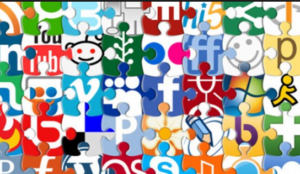
Google social media design … irrelevant subjects
Ensure you know who your target audience is and write relevant subjects of interest to them.
Here is an example to illustrate.
Significant Objects is an incredibly successful example of telling stories to give once worthless products a value.
This was an experiment devised by Rob Walker and Joshua Glenn, where they bought hundreds of thrift-store items, purchased for an average price of $1.25 each, asked 200 writers including Meg Cabot, Jonathan Lethem and William Gibson to contribute fictional narratives to the items and auctioned them off on ebay.
These stories led to an extraordinary profit of over 2000%
Not paying attention to results
Measure your accomplishments … against your objectives. Learn and apply learning if you want to get consistently better.

Social media design inspiration … employing shortcuts
There are NO shortcuts … it requires time and energy, and lots of persistence and patience. Don’t expect good results in a few short weeks. Don’t give up.
We are finding more and more businesses are defining meaningful social media design implementations.
“Web merchants view social media more as a medium to build up brand awareness and customer loyalty than as a way to drive immediate sales,” says Internet Retailer reporting on its survey of 175 companies that sell online.
Survey participants included 85 web-only merchants, 40 consumer brand manufacturers, 34 retail chains, and 16 catalog companies.
Here’s a rundown of the findings:
96 percent say social media campaigns are important to the future of their Internet business; 53 percent label it very important.
90 percent have a Facebook page, 75 percent are active on Twitter and 54 percent use Pinterest
51 percent post videos on YouTube, 9 percent use Google+ and 15 percent leverage Instagram.
The more success you have with customer engagement via your social media design, either on-line or off, the better your understanding of their needs and priorities.
Having the best customer insights makes it much easier for you to define your next moves and improve your odds of success.
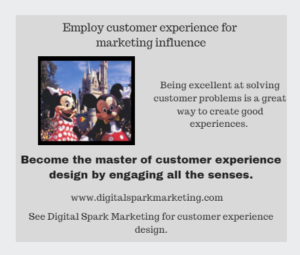
Please share a social media design experience with this community.
Need some help in capturing more customers from your social media marketing or advertising? Creative ideas to help the differentiation with your customers?
All you get is what you bring to the fight. And that fight gets better every day you learn and apply new ideas.
When things are not what you want them to be, what’s most important is your next step.
Test. Learn. Improve. Repeat.
Do you have a lesson about making your advertising better you can share with this community? Have any questions or comments to add in the section below?
Mike Schoultz is the founder of Digital Spark Marketing, a digital marketing and customer service agency. With 40 years of business experience, he blogs on topics that relate to improving the performance of your business. Find them on G+, Twitter, and LinkedIn.
Digital Spark Marketing will stretch your thinking and your ability to adapt to change. We also provide some fun and inspiration along the way.
More reading on social media mistakes from Digital Spark Marketing’s Library:
KPI Metrics … The Website Performance Indicators You Must Avoid
Like this short blog? Follow Digital Spark Marketing on LinkedIn or add us to your circles for 3-4 short, interesting blogs, stories per week.
Is Social a New Form of Marketing?
We receive many questions on whether social marketing is a ‘new age’ form of marketing. In our opinion, it clearly is not. Why may you be wondering?
I love finding brilliant social advertising creative that makes me wish I thought of it. And I especially love it, when it’s for a client that’s trying to make the world a better place.
That’s what social marketing is all about. And because it’s only “sell” is to try to get us to change our behaviors or attitudes about something, it can be powerful when done well.
What is social marketing?
Social marketing seeks to develop and integrate marketing concepts with other approaches to influence behaviors that benefit individuals and communities for the greater social good.
Although “social marketing” is sometimes seen only as using standard commercial marketing practices to achieve non-commercial goals, this is an oversimplification. The primary aim of social marketing is “social good”, while in “commercial marketing” the aim is primarily “financial”.
Increasingly, social marketing is being described as having “two parents”—a “social parent”, including social science and social policy approaches, and a “marketing parent”, including commercial and public sector marketing approaches.
So what, exactly, is social marketing? In Social Marketing Report, it’s defined as, “the application of commercial marketing techniques to social problems.” It means to take the same principles used in selling goods–such as shoes, television shows, or pizza–to convince people to change their behavior
Acknowledge that I am there
You should do this as soon as you possibly can. Don’t make your customers frustrated by making them wait. If you are busy with another customer, inform them you will be with them shortly.
Be friendly
Smile and introduce yourself. Wear a nametag and personalize it to help create meaningful conversation.

Don’t sell
Use your knowledge and experience to help customers decide. Help them in their search. Pushy sales pitches turn customers off. But personally relevant and interactive conversations switch them on.
Listen well
Make sure you understand their question(s). Then answer their questions as simply as possible.
Help them save time
Time is the customers most valued passion. Help them save it. Avoid seeking other help, or ‘handing them off’.
Be easy to work with
Exceed expectations whenever you can. If your business doesn’t have what the customer wants, offer alternatives, including other businesses.
Be honest
If you don’t know, say so. But use that question to research so as to be prepared next time. You don’t want to be saying you don’t know often.
Always do what you say
Do what you say and keep your promises. It is not an option to ignore follow up.
Stages of social campaigns
What is involved in the stages of social marketing? In a nutshell, when conducting a social marketing campaign, consider the following:
Identify your customers
Whose behavior do you want to change? It may be that you want to change the behavior of several different groups; in that case, you may want to influence them in different ways to bring them closer to the desired behavior. Such groups are often separated, or segmented, by age, gender, level of education, or race.
Identify what behavior you want to change
For example, increase prenatal counseling among expectant mothers.
Identify the barriers
This is done through interviews, surveys, focus groups or other methods; you’ll want to find out what makes it difficult or unattractive for people to make these changes. Do pregnant women feel uncomfortable at the area clinic, or are they made to feel stupid when they talk to the doctor? Is the clinic too far away? Can they not take the time away from their jobs?
Pretest your ideas
You then need to apply what you have learned according to your results.

Show the benefits of change
You have to show customers what you have changed and why. This will help customers see the benefits in a way that will draw them to take advantage of your efforts. Let people know what you’re doing to help them–the best program in the world won’t be used if people don’t know about it.
And of course, people need to understand the benefits of the behavior change. A pregnant woman will probably want to do what’s best for her child, but may not know that she needs extra iron during her pregnancy. It’s up to your organization to tell her.
And, although it’s not technically a part of social marketing, you’ll probably want to…
Assess your results and see if you have created the change you wanted.
How are these beliefs shaped and decisions made? Well, generally speaking, the following activities need to occur:
Create awareness and interest
Change attitudes and conditions
Motivate people to want to change their behavior
Empower people to act
Prevent backsliding
Conducting a social campaign
So how do we propose conducting a social marketing campaign? Here are ten tips to a campaign I recommend to our clients:
It starts with great employees
Employees are your service. Hire for their friendly, caring attitude and train for skills and knowledge. Empower them to be customer advocates.
Share all great service stories
Share them as soon as possible with all of your team and celebrate even the smallest of successes.
Show common courtesy
Show courtesies all the time. This leads to customer respect, which leads to conversation and the building of relationships and mutual trust.
Analyze when things go right.
When a company receives a complaint people usually have discussions to find out what went wrong and how to prevent it from happening again. Next time you receive a letter of praise, meet to find out what went right and how it can be repeated.This action is equal as needed for learning.
All the time
Amazing companies don’t always deliver ‘Wow!’ type experiences, they are just a better than average all of the time. All of the time is the secret sauce.
Improving the social in social marketing
In truth, social marketing [G2] can achieve it, right? Not that new, but good refreshers. There are recommendations on how to beef up social marketing everywhere you turn.
How many times have you seen companies requesting people to friend them on Facebook? Like farming, followers was the name of the game. Sad but true. The truth is that [G3] social marketing tactics are really about cultivating relationships with potential customers. Fan ‘skins’, by themselves, are of very little value.
What is the importance of social marketing to your business? Dialog with customers for sure. What about reading your content and remembering? Appreciating your help? Building relationships? We believe it is all of these things, but the bottom line end state is relationship building.
In the ever changing landscape of social networking, you might be wondering if you are getting the most out of your business’s social marketing tactics. Here we define social community engagement as the process of gaining customer website traffic, attention, interaction, and ultimately relationships through any and all internet sites.
In part it is true, but things get complicated by all the misinformation circulating about social marketing. From leveraging tactics to tracking issues, you are bombarded with conflicting messages, including whether social marketing is worth using at all.
Here are ten ideas we use most often to help improve social marketing with our clients. We believe they are the ones most critical to its success:
Listen and engage
Listening comes first and foremost to understand what customers are saying about their needs and perhaps about you. Once you have heard, then engage in as near real time as you can.
Your personality and voice
This one is pretty simple, but takes lots of practice in the beginning. Be YOU and be consistent. Remember customers deal with people and not businesses.
Don’t be a robot
As we said previously, social marketing takes a lot of time and energy. There many good tools in existence that will help in the workload. But keep this in mind, customers take note when it seems they are dealing with a robot. Don’t be that robot.
Be part of the community
Remember you are dealing with consumers that are part of a community not part of the audience. Pay special attention to adding value in that vein.
Commit to a plan
If you don’t know where you are going, any road will get you there, as the saying goes. Know your objectives and establish the best plan to get them accomplished. Remember this plan needs constant attention, iteration, and adaptation.
Emphasize friendly
One of your key business objectives is to build relationships with customers. That end game results in customer advocates and trust. This process takes constant attention to being friendly on a very consistent basis.
Measure results
This entire social marketing process is a constant iteration. Establish a few key measurements and pay attention to how well you are doing.
Analyze, correct, iterate and learn
Analyze your measurement results, and continuously make corrections, iterate, learn, and most importantly, adapt.
There are a lot of misconceptions about social marketing. Just because you read something in a blog post or hear something from a credible source doesn’t mean it is true or true for you and your business.
Always do your research, and continually try to improve. Social marketing is here to stay, and it can drive a lot of business for you, assuming you are leveraging it correctly.
Paying attention to your listening.
Focused listening is the lynchpin
These days more and more companies are turning their attention to focused listening for social commerce business. Meaning ? The simple meaning is they believe that they need more attention to building customer relationships.
From customer relationships comes trust, the most important factor in a customer selecting a company with whom to do business. The secret to building customer relationships is customer engagement, and there are many ways you’ll need to engage customers.
What is focused listening?
Focused listening is the art of discovering valuable customer insights. Remember that the real value is what we hear, not what we say. A very important concept for marketers that is often difficult to learn.
Strategic listening action
Starts with showing appreciation … for customers.
Who and how
With whom and how do you engage? Carefully select your targets for the community you want to build.
What are the barriers
Barriers that have a way of preventing optimal consumer engagement need to be defined.
Interactive customer engagement
Customer engagement is a high priority for any brand, and they continually look for new ways to collect inputs from customers. A good current example is the Ben and Jerry’s ‘Scoop Truck’, which travels around the country giving out free samples of new products and soliciting customer inputs.
Look beyond
Look beyond how customers have interacted with you in the past. Constantly test new ideas.
Use customer collaboration
Solicit customer collaboration to obtain customer ideas. Fans inspire lots of new ideas if you just ask them their opinions.
Use the insights
These insights will continually update your ideal customer persona.
The bottom line
In this article, we’ve explored a multitude of creative ways to use social marketing to increase engagement and build customer relationships. The key is to know your audience and what they’re most likely to respond to. Give them more of that.
It’s OK to promote your company and products, but do it in a way that capitalizes on your audience’s deepest interests and connects with them on a personal level. Avoid selling.
Here’s the thing, social isn’t just a new way of marketing, it’s a new way of running a business. Social companies certainly have figured this out and are using social marketing to grow their business rapidly.
Blogger Writing Tips That Will Help Your Success
Can I make a confession? When I started writing, I was no Shakespeare. I wasn’t even a Hemingway. In fact, I was downright awful. I could have used this blogger writing tips.

Like many of you, I didn’t get any kind of degree in writing. I didn’t shine in high school English. I never entertained dreams of being a best-selling author.
As Vladimir Nabokov put it, “writing is rewriting.” The greatness comes not from the initial spark of inspiration, but from the long hours spent honing it down to reveal its core. But before you do that, you need to dare to be crap and produce the first draft.
In other words, writing is work. As in most things, talent is overrated. You produce good work not from having a knack for a clever turn of phrase, but by putting in the effort to express your ideas clearly.
And my first posts online proved it.
But over time, I started realizing how important writing is in business. (Spoiler alert: it’s super important.)
So I studied, practiced a lot, and got better. I’m still no Shakespeare, but I’ve learned a lot about writing. Writing isn’t a talent—it’s a skill. A skill you can develop, refine, and improve.
Becoming a great copywriter isn’t easy, but if you consistently work on your writing, your writing will get better and better.
Here are 19 writing tweaks that will propel you to copywriting mastery.
Focus on your headings
Legendary marketer David Ogilvy is famous for saying,
On average, five times as many people read the headline as read the body copy. When you have written your headline, you have spent eighty cents out of your dollar.
Take a lesson from the master, and create the best titles and headings possible. Whether you’re writing the main headline on a landing page or an email subject line, put some serious thought into it.
Write shorter sentences
Short sentences are powerful.
While you shouldn’t try to make every sentence short, you should use them to break up the text. No one wants to read a sentence that’s two paragraphs long.
Short sentences catch your readers’ attention. They’re easier to digest, and they help readers move through the content easily.
Employ single sentence paragraphs
A single sentence paragraph can do a lot.
When you use a single sentence paragraph on its own, you draw attention to it. Your readers will know that’s an important point to remember.
If you want your readers to listen up and remember something, make that sentence into its own one-line paragraph.
Bold or italicize important statements
If there’s something you want your readers to remember, make it bold.
A survey by the Nielsen Norman Group revealed that 79% of users scanned every web page. Bold text makes that scanning process a lot easier.
Use personal stories
A personal story can turn a good article into a great one. If you’re writing about SEO and you tell readers how it helped you, they’ll be more likely to try it themselves.
Personal stories help build personal connections with your readers. They’ll see that you’re just like them, and they’ll be willing to listen to you.
Use unique CTAs
To be blunt, a “Buy now” button is boring. So is “Join.” And don’t even get me started on “Click here.”
Use your call to action to give your readers something different. A great CTA lets readers know what they’re getting, and it gives them a great reason to click on it.
Treehouse has a great CTA on its homepage:
Use other people’s stories
I love using real-life examples in my writing. When I include stories about how influencers have benefited from something, my readers understand how powerful it is.
Using others’ success stories lets your readers know you’re not full of hot air. If you know that something works, use stories to prove it.
Start strong

When it comes to writing articles or blog posts, you absolutely have to start with a strong statement. Tell your readers why they should keep reading.
I’m a big fan of using the first few sentences to relate to readers by addressing their concerns.
But you can also say directly what the post is about. Brian Dean from Backlinko does this a lot:
Doesn’t that make you want to read more? You immediately know why the article is going to be superb.
No matter what you do with the beginning of a post, make sure you connect with the reader right off the bat.
Speak your readers’ language
Take a look at past comments from readers. How do they write? Do you see any common phrases popping up?
Use this information to improve your writing. By literally using your readers’ language, you’ll make it easy for them to relate.
Stay actionable
There’s nothing wrong with theory—in theory, that is.
When you write an article without giving one actionable tip within it, it’s hard to take that article seriously. Your readers have no way of knowing whether you’re sharing good information.
In each post, aim to include several actionable tips your readers can use today. Sprinkle them throughout the text so readers get new advice with each section.
Employ a thesaurus
Ever notice you tend to use the same words over and over again? Or have you found yourself looking for the perfect word to use? You need a thesaurus.
Having a thesaurus is ideal for finding new words to introduce into your writing.
Now please, don’t use a thesaurus to try to find big, sophisticated-sounding words.
Simpler words are almost always better. But if you can’t think of a simpler word, maybe the thesaurus will help.
Bookend important points
You were probably taught that you should start a paragraph by introducing the main idea (a.k.a. a topic sentence). I’ll go a step further and say you should talk about your main idea in the first and last sentences of a paragraph.
People will remember information better if they see it more than once. By talking about your main point both at the beginning and at the end of a paragraph or section, you’re making that idea stick in your readers’ heads.
Be brutal when editing
Rough drafts aren’t called rough drafts for nothing. You may have a great idea, but without editing, you won’t make your writing the best it can be.
There’s a saying in writing: “Kill your darlings.”
The point is not to become too emotionally attached to your writing. Don’t keep something because you think it sounds nice.
Be honest and unbiased. Cut out filler words, remove lazy phrases, and shorten any novel-length sentences.
Use you vs we or us
Guess what? Your copy shouldn’t be about you. It should be about the customer.
Using you means the copy is talking directly to the customer. But using we and us turns you into another boring company.
Don’t fall victim to the “all about us” copywriting trap. Show your readers how they’ll benefit.
Use transitions

No one likes to be hit over the head with something.
If you’re going from one topic to another, use a transitional phrase or sentence to make the shift smooth.
One great method is to connect the current section with the next one. Ramit Sethi uses this approach often:
Leverage lists
Lists are fantastic. They break down information into smaller chunks, and the format makes it a breeze to read.
If you’re packing a ton of information within a paragraph, consider making it into a list. Numbered lists work well for processes, and bullet points are ideal for everything else.
Eliminate buzzwords
It’s tempting to use jargon because it’s so widespread. But the truth? Most of the time, it comes across as vague filler text.
You might want to write a post called:
“Creating a Streamlined Process for Creating a Dynamic Funnel,”
but it’s more direct to title it:
“How to Get More Customers Fast.”
There’s a time and place for buzzwords, but don’t go over the top with them.
Keep it focused
Writing about sales? You could go into all sorts of topics, from marketing to public speaking.
But it’s important to narrow that scope so you don’t lose readers by going on tangents.
Keep everything on topic. Don’t talk about another subject unless it’s relevant. If you do talk about something else, keep it short.
End with a bang
My absolute favorite way to end an article is to include a question that engages my readers.
I like interacting with my readers and getting them involved. Asking an open-ended question is a great method of doing that.
End your articles with questions that start a conversation, and respond to comments. You’ll create a strong community, and your readers will appreciate it.
The bottom line
You don’t need years of study to become a master copywriter.
But you do need to practice.
And you need to practice a lot.
Your writing will only get better if you take the time to refine it. Every day, make it your goal to write something, even if it’s not much. You might be surprised to see how quickly your wordsmithing improves.
How to Create Killer Call to Actions for Your Blogs
Oh, if only that were that simple. I’d probably read through more than once. However, now that I have you thinking about the proper way to motivate someone, I’d like to share some tips on how to craft a killer call to action for your marketing campaigns.

Social media is constantly growing and evolving.
So is the way we use it in business and as marketers.
Following blogs that discuss social media and social media marketing is a great way to stay up-to-date with these changes in how social media is being run and used so that you can utilize it in the most productive way.
What Is a Call to Action?
In marketing, your call to action is the part of your advertisement that tells your target audience what they should be doing once they click on your PPC ad and hit your website or landing page. The simplest example of a call to action is “Buy now!”
The more information you can provide your potential customers with your CTA, the better it will be for all parties involved. You can let your audience know what to expect when they click on your ad, and you can help dissuade the wrong users from clicking by means of a clear and direct message.
CTA’s use strong command verbs
It’s all about being clear and concise with your CTA. You don’t have a ton of space in your ad to get your point across, with the character limit set at 35 characters per description line, so it is important to get straight to the point. Let your audience know exactly what you want them to do, and start the CTA with the desired action.
- Run an e-commerce website? Start your CTA with words like “buy,” “shop,” or “order”
- Promoting a newsletter or white paper? Start your CTA with words like “download” or “subscribe”
- Want someone to request more information? Try “fill out a form for…” or “find out how…”
Let’s refer to that white paper example. If you’re a marketing agency promoting your latest tips and insights, you want to be sure that your audience understands exactly how to access that white paper. If your CTA read something like “Our latest white paper is available” you may not get a great click-through rate, as folks might not be sure where or when they can expect to get their hands on it.
A call-to-action such as “download our white paper today!” is much more direct and informative, which should help improve CTR.
Provoke emotion

You want to be able to elicit a strong response from your audience as a result of their enthusiasm. If your CTA is enthusiastic, then your audience will be enthusiastic too. Take a CTA like “buy now and get 50% off!” – not only are you providing them with a massive benefit but who wouldn’t be thrilled to get their order for half off?
For someone looking to book a trip with their family, a CTA such as “plan your dream vacation today!” will excite them about the notion of a family trip and make them eager to click on your ad.
Give a reason for the desired action
In other words, what’s in it for them? Will it help them do their jobs better, lose weight, or save money? This will tie in heavily with your value proposition, or unique selling point (USP). Your USP is arguably one of the most important pieces of acquiring new leads, so creating a nice USP/CTA mash-up is a great way to increase clicks.
A good example of this would be something like “call today to schedule your free consultation!” Not only have you stated the action you want the user to take (call today), but you have also provided them with a reason why they should take that action (a free consultation).
Know your devices
Creating a killer call-to-action is important, that’s no secret. But I also urge you to consider customizing your CTA based on the device being used by your audience.
Google considers desktop and tablet as the same device, as the screen sizes are roughly the same, and people use them for search in similar scenarios. An example of this would be a person sitting on the couch at night, who sees an ad on TV for a product they’re interested in. The next thing they’ll probably do is grab their laptop or tablet and search for more information on it.
However, mobile devices tend to have different user behavior and search intent than desktop/tablets, making it prudent to tailor your CTA based on the device. Users who search for something on their desktop or tablet are typically still doing their research, and are not quite ready to commit.
But users searching for something on their mobile phone are often looking for “instant gratification” or fast results.
Someone could be walking down the street when they see an ad on a moving bus, and whip out their phone and quickly search for what they saw before it leaves their brain. Their search will also likely result in a phone call to complete the desired action, rather than browsing a website.
My advice is to create a more phone call-centric CTA for your ads that appear on mobile devices. You could try something like “call now to get started” or “call us today for more information,” and that should help guide your target audience to take the action you want them to take.
There are two ways you can make this tactic even more effective:
- Google gives you the ability to set a mobile preference for your ads, which allows you to designate certain ads to only appear for searches completed on mobile devices. With this option, you can focus your CTA on generating more phone calls.
- You can also enable call extensions, which allow you to display your phone number alongside your ads. This option is available for all devices, and I strongly recommend that you take advantage of it, but Google automatically adjusts the way your call extensions are displayed on mobile searches. Instead of your number appearing, a small “Call” button will be display, allowing for one-touch dialing.
Be creative

It’s important that you keep your CTA’s fresh, much like you should with your ad copy in general. A good, old-fashioned A/B test is a great way to identify which CTA’s bring you clicks, and which CTA’s bring you frowns.
While your tried and true calls-to-action like the ones we’ve already discussed are always good to use, you really never know how they’ll perform in your account until you actually use them.
PPC is definitely a game of trial and error (which is why it can be frustrating!), and your calls-to-action are no exception to the rule. Something could look great on paper or may sound great when a colleague recommends it to you, but the only way you’ll absolutely know for sure if something will work for your account is if you test it out.
Your target audience may not respond well to what could be considered a “surefire CTA,” which is enough to make you pull your hair out. I recommend not only testing different CTA’s but being creative with them too. If your target audience isn’t responding well to your ads, you might as well try to think outside the box a bit!
Use numbers when possible
We, consumers, respond well to seeing numbers such as pricing, discounts, promotions, incentives, etc. It helps us to determine whether or not it’s worth splurging on items we desperately want but probably aren’t essential to everyday life.
So when the opportunity arises, why not appeal to your target audience that way?
I am always a big proponent of including pricing information in your ad copy in general, and that includes your CTA. If a user sees your pricing information in your ad and decides to click through to your site, then you know they are still interested in the product or service you are offering.
Now you know you have yourself a valuable click and an increased chance at generating a conversion. But, if you don’t include your pricing information in your ads, someone may click through to your site, excited about your products/services, but then get scared off by your prices; now you have yourself a less than desirable situation.
This leads to the dreaded wasted spend in your account, and who wants to deal with that?
Try experimenting with your pricing information in your CTA, as well as any other applicable numerical information. A CTA such as “Shop today for TVs under $300!” not only shows a user how little they will pay for a TV, but it also hits on the FOMO element as well.
If you are running a special promotion for shipping, you could try something like “order by Sunday for 1-day shipping.” Maybe you are an auto body shop looking to incentivize your audience with a discount; your CTA might look something like “Book today! 15% off your next visit.”
Mind Blowing Facts About an Eye Popping Social Media Campaign
Are you interested in learning how to create a social media campaign? Looking for the latest social media marketing tactics? Perhaps you want to know what the social media marketing pros are doing today. It is not terribly hard to accomplish these objectives. We’ll share with you how the most successful businesses use social media to grow business and brand loyalty.
Check out our thoughts on creative marketing.
How many times have you seen companies requesting people to friend them on Facebook? Like farming followers was the name of the game. Sad but true. The truth is that social media marketing campaigns are really about cultivating relationships with potential customers. Fan ‘skins’, by themselves, are of very little value.
Related post: Social Media Platforms … The Magic Every Content Marketer Needs
Related: Social Media Marketing Lessons From the New Pros in Town
What is the importance of social media to your business? Dialog with customers for sure. What about reading your content and remembering? Appreciating your help? Marketing? Building relationships? We believe it is all of these things, but the bottom line goal is relationship building.
Keeping up with the latest in social media campaign tactics is not always easy, but always a worthy thing to do for your business.
Social media has provided marketers with some powerful new tools. They are global, potentially viral and low cost. But they take considerable effort and time. Businesses will often have entire teams dedicated to communicating with followers, and will spend a significant chunk of their budget acquiring new leads from the Internet.
From blogging to pay-per-click advertising, there are plenty of ways to establish a web presence. Most businesses will use multiple techniques in order to maximize results; however, as the years go by a new form of marketing has emerged; viral marketing.
Marketing for small to mid-sized businesses is a different animal than it is for big brands. For the former, cost is always a factor, they insist on measurable results (even if their metric is as vague as “Do we think it worked?”), and creativity usually takes a second place to cost-effective, day-to-day manageability.
And yet, whether you are Millifiore Skin Care, Black Tulip Restaurant, or Coca-Cola, the challenges are much the same: To grab prospects’ attention; re-explain quickly and memorably how you make life better; and give them good reasons to buy now.
No matter how many zeroes appear on your marketing invoices, there is never enough money to reach the market the way you’d really like to, so all businesses need to experiment with new ways to reach their target markets.
Why social media campaigns are so important

Social word-of-mouth
Social media enables consumers to generate and tap into the opinions of an exponentially larger universe.
While word-of-mouth has always been important, its scope was previously limited to the people you knew and interacted with on a daily basis. Social media has removed that limitation and given new power to engage a much wider set of consumers.
Hyper-informed consumers
Social media is transforming the way that consumers across the globe make purchase decisions.
Consumers around the world are using social media to learn about other consumers’ experiences, find more information about brands, products and services, and to find deals and purchase incentives.
Here’s how to create a social media campaign
Here are 19 action considerations for social media campaigns. These are the ones we use most often with our clients. We believe they are the ones most critical to the success of your social media marketing:
Define target customers
It all starts with knowing who your customers are and knowing as much about what makes them tick as you can. Without this step, most of the other steps become just a shot in the dark.
So spent a lot of your time on this action. Keep in mind that you can’t be everything to everybody. Remember that not all customers are alike.
Choose best channels
Once you understand who your target customers are, you’ll need to study which social media sites they use most frequently and to what end. Social media takes a lot of time and energy, so you need to know where your time will be best spent.
Share unique content
Your content goal is simple … be as helpful as you can and/or be entertaining, or else be ignored. If you are going to put in the time and energy, you don’t want to be ignored.
Capture customer hearts in the first 30 seconds
What are you doing to make their first 30 seconds on your platform extraordinary? If you can’t answer this question, you need to start here. First impressions are everything.
Strike an emotional chord
Make consumers feel something. If you want to grab my attention on Twitter, make me laugh. Make me cry. Make me feel something, anything.
When I have a super busy day and I am replying to tweets on Twitter I have no choice due to the amount of them and time constraints but to choose where and when I am going to respond. It is an easy choice for me. I respond to the people who grab my attention.
These are the people who are nice, who make me feel good. The people who are genuine. The people who make me laugh. Pull an emotional chord.
Don’t send snarky tweets trying to get attention. Most people can see right thru the snark and won’t respond. I ignore the trolls and the folks looking only for attention. Be genuine and offer something of emotional value.
Listen and engage
Listening comes first and foremost to understand what customers are saying about their needs and perhaps about you. Once you have heard, then engage in as near real-time as you can.
Be YOU and be consistent. Remember customers deal with people and not businesses.
As we said previously, social media marketing takes a lot of time and energy. There many good tools in existence that will help in the workload. But keep this in mind … customers take note when it seems they are dealing with a robot. Don’t be that robot.
Emphasize social
One of your key business objectives is to build relationships with customers. That end game results in customer advocates and trust. This process takes constant attention to being social on a very consistent basis.
Tell short stories and educate
Not sure what content your fans want? Prototype and test your ideas! Try posting different types of status updates, related and not related to your product and company. Also, use your social media insights to see what your readers are engaging with the most, and then deliver more of it.
Many brands build TV commercials and then share them with fans on their social media sites. A great example is with the Guinness ad we discussed in our article on Guinness marketing using storytelling. This technique used subtle messaging with a great story to appeal to fans. The story’s light touch made sharing the story seem less like an advertisement
Doing a great job of creating campaigns that tell short stories and have subtle messaging is an effective campaign tactic.
If you’re inexperienced in video marketing, that’s okay. There is a very large variety of articles on the topic, and a good place to learn. But remember the best way to learn is by doing and practicing. Start your video creations with free tools like Vine and Instagram.
Consumers always enjoy good stories and helpful information that educates.
Partner with complementary brands
Contests and giveaways are standard tactics on social media campaigns. You can overcome this challenge with some creative thinking. Find complementary brands that fit with your objectives … say for contests. You can also retweet content on Twitter and likes Instagram photos of complementary brands that promote something related to your products and services.
Capitalize on major local events
During the Sochi Olympics, Coca-Cola hosted a contest/series called #CokeGames. The gist of it was that they created simple Olympics-inspired games like Bottle Cap Hockey, Coke Curling, Ice Cube Ski Jump. Then, they asked their followers to play along by filming and uploading short videos of the Coke fan playing the game. The incentive was an opportunity to win a $100 gift card.
Your small business could adopt this idea, using any big local event as inspiration. It might be a local seafood festival or perhaps a local hockey team championship game. These local events happen all the time and offer great opportunities for at the attention of your brand and therefore your relationship building.
Stimulate conversation with thought provoking questions
How do you create fan conversation? One great way we have found is through asking fans a thought-provoking question. Use questions that relate to your brand. For example, Internet Explorer asked how people imagine the web in 5 years. Remember that you need to be part of the community and give your answer.
When asked to share their vision of the future, fans had fun sharing their thoughts and others used the Q&A as a way to voice their opinions on IE’s products.
Show your fans the fun
It’s always appropriate for a brand to show its personality. If it’s a personality that wants to be a little weird occasionally, go ahead and get a little weird.
Skittles is a great example of this tactic. Yes, most of their posts are silly, but it’s working for Skittles.
A typical day’s posts can include observations such as “Really boring pirates carry pigeons on their shoulders” and shots from the page’s ongoing BFF series, in which it posts photos from users posing with their beloved Skittles.
If you’re a product-based company, ask your users to send photos of themselves using your product or service in exchange for a shot at a prize, or for the honor of being featured on the page.
Post fun facts and popular topics
Not all of your company’s posts should be brand-centric, but that doesn’t mean they can’t be branded. Kit Kat posts fun facts and takes advantage of popular topics, but also includes their tagline, “Break Time. Anytime.” on the images they share.
You should always look to tap into a trending local topic, particularly if it relates to your products and services. Find useful creative visual designs to reinforce the message.
Crowdsource ideas
Always use any and all ways to gain customer insights that you can employ. One way to accomplish this is to crowdsource ideas from customers. We have written about two companies that have used this technique very successfully. (See our 2 crowdsourcing articles … one on Starbucks and one on Legos.)
My Starbucks Idea website is at once a crowdsourcing tool, a market research method that brings customer priorities to light, an on-line community, and an effective internet marketing tool.
Encourage customers to give their opinions and reward the best ideas. It’s a great example of how a business can use social media as a mini–focus group and learn what customers really want.
Use social media as a customer service/ experience gateway
There are many ways a brand can use social media to help manage customer service and experience. Start small, just collecting all inputs, good and bad. And then grow from there.
For example, the Olive Garden showcases their food with “Yum!”-inducing photos to draw attention to their social media as a way to solicit customer service insights. That’s to be expected of a restaurant.
What’s more impressive, though, is that Olive Garden uses their platforms as a gateway to customer service. They encourage customers to chat with their guest relations team about experiences at their restaurant.
Don’t you think you can follow this model? You certainly don’t have to be a restaurant. How serious are you about customer service and customer insight engagement?
You don’t have to make the social network your main source for support, but you should respond and interact with your fans to answer their questions. You’ll not only boost engagement, but also show that you’re human and you care about their opinions and questions.
Create new customer experiences
At the core of Ford’s social media marketing strategy is an effort to give the company’s potential customers a chance to experience the brand and the product in ways they never expected. Before the unveiling of the 2011 Explorer, Ford created a Facebook page that gave its fans sneak peeks at features and video interviews with the design team and chief engineer. And in both campaigns, it’s the customers themselves that are selecting and talking about the new experiences.
Scott Monty’s advice on whether Social Media Marketing is right for your company,
If your customers are there you need to be there too … he also went on to say ‘You need to listen’. Observe how they behave and act similarly.
Respond to everyone
No matter what you do, if you want to build engagement you have to be engaging with all customers and potential customers. What does this mean? Do a great job of responding to most comments.
Tag people in a comment stream to let them know that you’ve responded to their inquiry and/or appreciate their comment.
Related post: 11 Updates to Starbuck’s Creativity and Innovation
Analyze, correct, iterate, and learn
Analyze your measurement results, and continuously make corrections, iterate, and most importantly, learn.
Follow the 70/20/10 Rule
Here is an important guideline to keep in mind for all of your social media sites. Follow the 70/20/10 guideline … not a rule, but a guideline. Let us break that down for you. The majority (70%) of content that a social media site page puts up should be brand- and business-building, meaning it’s information that is valuable to your followers. Content shared from other sources makes up 20% and the remaining 10% or less (NEVER more) is self-promotional.
Apply the 70/20/10 rule to your own content mix and generate more interest for your social media and increase your customer engagement.
The bottom line


